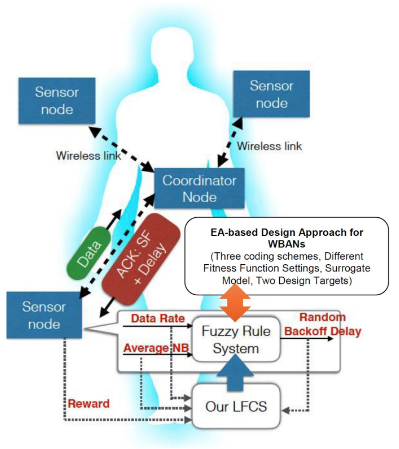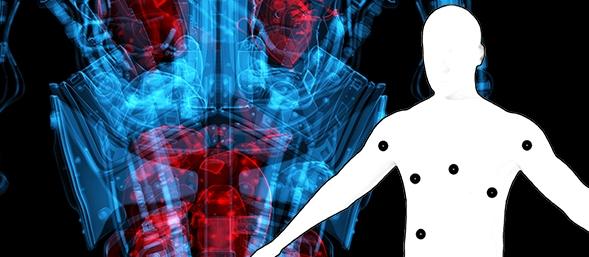Enhancing Wireless Body Area Networks design and functionality
Over the past decade, advances in electronics, computer science, and wireless technologies have brought wireless body area networks (WBANs) to the forefront of real-time monitoring.
At the Victoria University of Wellington, Mohammad Nekooei is using NeSI computing resources to explore ways to improve both reliability and performance of Media Access Control (MAC) in WBANs.
“My research involves simulations which can be very time-consuming,” he says. “It would have taken me months to get results so it was essential for me to use NeSI.”
WBANs consist wireless sensor nodes to monitor biosignals such as electroencephalography (EEG), electrocardiography (ECG), blood pressure, heart beat rate and body temperature. When used in healthcare applications, reliability becomes especially important because WBAN is responsible for carrying critical medical data and signalling emergencies such as vital organ failures, Nekooei says.
“Each WBAN is able to collect information from sensor nodes and send information to an external medical health system through a special node called the coordinator,” he explains. “In my research, I’m aiming to improve reliability while keeping the communication delay at a low level.”
As part of his work, Nekooei has been exploring ways to improve and automate the design of fuzzy logic controllers (FLCs), which are used in WBANs to handle the flow of information from the sensor nodes. In a paper published in Applied Soft Computing earlier this year, ‘Automatic design of fuzzy logic controllers for medium access control in wireless body area networks - An evolutionary approach’, he and his colleagues introduced an evolutionary approach to design FLCs for improving the communication quality in WBANs.

“A critical problem in the evolutionary search process relies on repeated evaluations of candidate fuzzy logic rule controllers,” he says. “The NeSI technical staff really helped me. They were very supportive and responded to all of my requests.”
His computational jobs required fast and reliable performance, which he says is one of the biggest assets of using NeSI. Before using the Pan cluster, each run of his model was taking more than 200 hrs to complete. With a PhD thesis deadline looming, Nekooei says NeSI’s high performance systems got him the answers and insights he needed quickly.
“If I hadn’t used NeSI, honestly, I really doubt I would have finished my PhD,” he says. “Access to high performance computing helps me get more results and improve the quality of those results and my research.”
While Nekooei’s main focus has been related to applications in healthcare, any insights he gains about improved WBAN design and functionality have practical transfers to other sectors as well.
“It can also be used for athletes in training, to monitor information like heart rate, and coaches can use that information to adapt and improve the training program,” Nekooei says. “It really has a wide range of practical approaches.”
With his PhD now complete and another Pan-supported journal paper in the works, Nekooei says he is keeping NeSI in mind as he prepares to enter the next chapter in his research career.
“High performance computing is essential for projects like mine when you need reliable and fast platforms to run these jobs,” he says. “If I want to continue my research, I will definitely still need to use high performance computing.”







